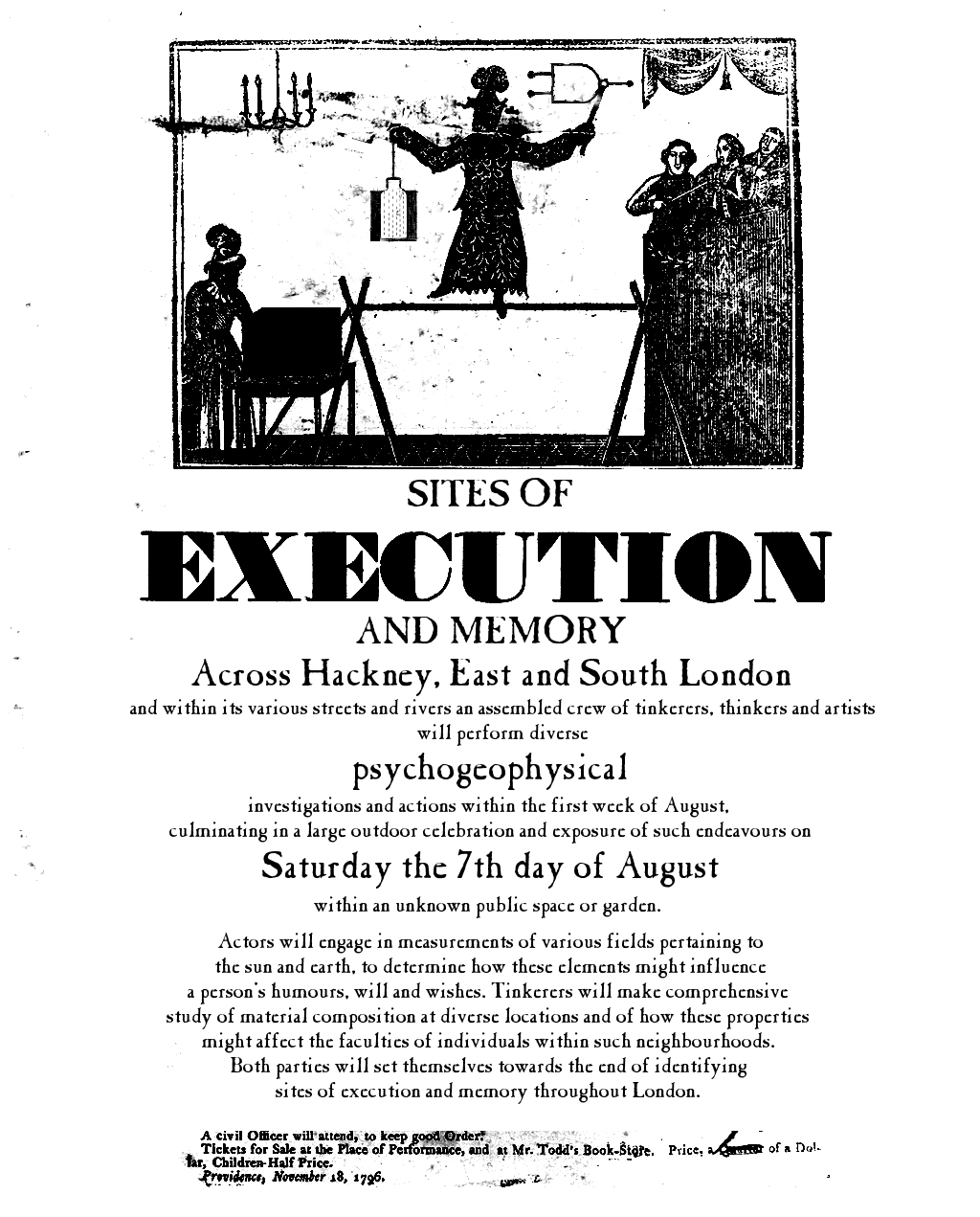The Psychogeophysicks Reader (2010, draft)
Filed under book | Tags: · electromagnetism, magick, psychogeography, psychogeophysics

Contents:
1. TELLURO-MAGNETIC CONSPIRACY TOWARDS THE SUN I & II extracts from Cyclonopedia: Complicity with Anonymous Materials by Reza Negarestani, 2008.
2. The HIEROGLYPHIC MONAD by John Dee, 1564.
3. The “PW” CRYSTAL EXPERIMENTER’S HANDBOOK, from Popular Wireless, 1925.
4. The Philosophers of Nature (Jean Dubuis): Lessons 9 & 16, ON MINERAL ALCHEMY. 1986.
5. The EPISTLE OF JOHN PONTANUS, 1600.
6. JERUSALEM by William Blake, 1820
7. ON THE POSSIBILITY OF DIRECTLY ACCESSING EVERY HUMAN BRAIN BY ELECTROMAGNETIC INDUCTION OF FUNDAMENTAL ALGORITHMS by Michael Persinger, 1995.
By anonymous
30 July 2010
PDF (draft, July 2010)
PDF (version 0.4, August 2011; added 2012-2-7)
The Psychogeophysics Handbook (2010, draft)
Filed under book | Tags: · code, electromagnetism, media ecology, psychogeography, psychogeophysics, situationists, software, software studies, spectral ecology, technology

With psychogeography easily de ned as a playful examination of the total effects of geography and place on the individual, [“the study of the precise laws and specifi c effects of the geographical environment, consciously organized or not, on the emotions and behavior of individuals.” Guy Debord. Introduction to a Critique of Urban Geography, 1955]. Psychogeophysics extends such research to embrace geophysics, defined as the quantitative observation of the earth’s physical properties, and its interaction with local spectral ecologies. Geophysics equally encompasses archaeological geophysics, with measurement of such properties allowing for the mapping of previous traces through techniques of particle/wave detection and data forensics.
This extension of psychogeography into geophysics implies a collision between interpretation (fi ction) and measurement, with Psychogeophysics proposed as a novel discipline that bridges any such distinction through the medium of code, and offers a speculative take on the future of code as an uncovering of its locative (diagnostic) potentials leading to a new phase of software studies.
By anonymous
20 July 2010
authors
article about psychogeophysics (Anthony Iles, Mute)
Anthony Dunne: Hertzian Tales: Electronic Products, Aesthetic Experience, and Critical Design (1999/2005)
Filed under book | Tags: · design, electromagnetism, industrial design, radio, semiotics, technology

“As our everyday social and cultural experiences are increasingly mediated by electronic products—from ‘intelligent’ toasters to iPods—it is the design of these products that shapes our experience of the ‘electrosphere’ in which we live. Designers of electronic products, writes Anthony Dunne in Hertzian Tales, must begin to think more broadly about the aesthetic role of electronic products in everyday life. Industrial design has the potential to enrich our daily lives—to improve the quality of our relationship to the artificial environment of technology, and even, argues Dunne, to be subverted for socially beneficial ends.
The cultural speculations and conceptual design proposals in Hertzian Tales are not utopian visions or blueprints; instead, they embody a critique of present-day practices, ‘mixing criticism with optimism.’ Six essays explore design approaches for developing the aesthetic potential of electronic products outside a commercial context—considering such topics as the post-optimal object and the aesthetics of user-unfriendliness—and five proposals offer commentary in the form of objects, videos, and images. These include ‘Electroclimates,’ animations on an LCD screen that register changes in radio frequency; ‘When Objects Dream…,’ consumer products that “dream” in electromagnetic waves; ‘Thief of Affection,’ which steals radio signals from cardiac pacemakers; ‘Tuneable Cities,’ which uses the car as it drives through overlapping radio environments as an interface of hertzian and physical space; and the ‘Faraday Chair: Negative Radio,’ enclosed in a transparent but radio-opaque shield.
Very little has changed in the world of design since Hertzian Tales was first published by the Royal College of Art in 1999, writes Dunne in his preface to this MIT Press edition: ‘Design is not engaging with the social, cultural, and ethical implications of the technologies it makes so sexy and consumable.’ His project and proposals challenge it to do so.”
Publisher MIT Press, 2005
ISBN 0262042320, 9780262042321
174 pages
PDF (updated on 2012-11-19)
Comment (0)
